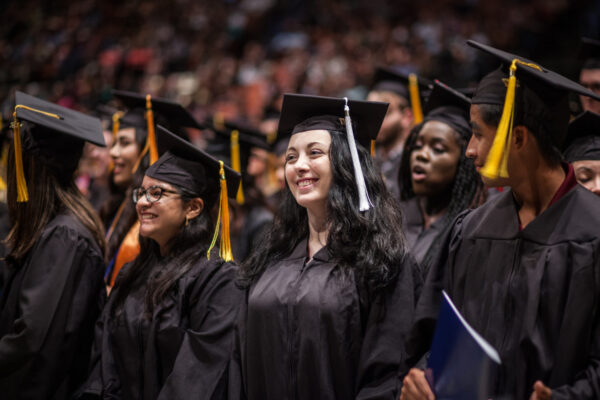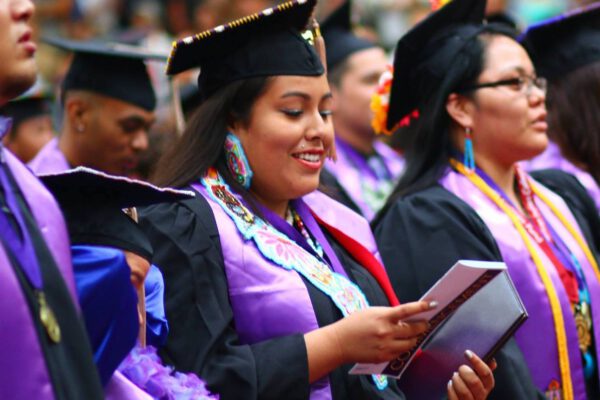As the White House gears up to host the first-ever White House Tribal Youth Gathering this July, Christine Nelson looks at efforts to expand higher education opportunities for American Indian and Alaskan Native students.
When President Obama signed an executive order in 2011 directing federal agencies to help improve educational opportunities for American Indian and Alaska Native (AI/AN) students, hopes were high that much-needed national attention would be focused on the educational attainment of Native youth.
More recently, First Lady Michelle Obama offered opening remarks at April’s White House Convening on Creating Opportunity for Native Youth. Her call for action openly acknowledges the challenges in Indian Country and the obligation the United States has to the First Peoples of this nation:
We can’t just invest a million here and a million there, or come up with some five-year or ten-year plan and think we’re going to make a real impact. This is truly about nation-building, and it will require fresh thinking and a massive infusion of resources over generations. That’s right, not just years, but generations.
National data help us understand degree aspirations and enrollment and financial aid trends of the understudied AI/AN population. A new infographic from ACE’s Center for Policy Research and Strategy gathers numbers from the U.S. Department of Education’s National Postsecondary Student Aid Study (NPSAS: 04; NPSAS: 12) to give a snapshot of AI/AN students, who represent almost one percent of the national college student body.
Among the findings: 208,838 AI/AN students were enrolled in a post-secondary institution in 2012, a 17 percent increase from 2004. However, 46 percent of AI/AN students are first-generation and low-income, a population that often struggles with college completion. (Click the image to see statistics on demographics, degree aspirations and more.)
Other Department of Education data on high school dropout and completion from 1972-2009 show that 82 percent of the American Indian population between 18 and 24 years old have a high school diploma or an alternative credential—compared to 94 percent for white students. In terms of higher education, only 13 percent of American Indian and Alaska Natives over the age of 25 have obtained a bachelor’s degree or higher.
So what can we do to begin to turn these figures around?
Engaging students well before they are college age—always a necessity—is especially important for the AI/AN population. Forty-two percent of this group is under age 25, compared to 24 percent for the general population. One initiative that is working to combat educational inequities beginning at a young age is Generation Indigenous (Gen I), a collaboration across U.S. governmental agencies and non-profit groups that focuses on engaging Native youth age 14-24 with tribal leaders and building tribal capacity. Capacity building is particularly critical because of the ripple effect it has for both Indian Country and the United States as a whole.
Through Gen I, students are offered a diverse number of platforms to engage in leadership development, such as tribal-initiated college and career readiness programs, and larger opportunities like the White House Tribal Youth Gathering scheduled for this July.
Another initiative, the Center for Native American Youth (CNAY) at the Aspen Institute, continues to be an integral part of removing barriers for Native youth to succeed. In 2014, CNAY created the National Native Youth Network in partnership with the White House and U.S. Department of the Interior to provide more and better educational and economic opportunities for Native youth.
As part of the Network, CNAY co-hosted the April White House event mentioned above with over 60 philanthropies to encourage increased investments in these young people, through funding community-based programs, creating scholarships and facilitating career development. CNAY has also created a large youth leadership development program and is currently developing an online portal that will house information about resources available to Native youth.
All of these new initiatives and research provide a great launching pad to address educational attainment issues for AI/AN students, but much work remains.
For more information on the Native higher education movement, see the following:
Shotton, H.; Lowe, S.; & Waterman, S. (2013). Beyond the Asterisk: Understanding Native Students in Higher Education. Sterling, VA: Stylus Publishing.
Minthorn, R., & Chavez, A. (Eds.). (2015). Indigenous Leadership in Higher Education. New York: Routledge.
Brayboy, B.; Fann, A.; Castagno, A.; & Solyom, J. (2012). Postsecondary Education for American Indian and Alaska Natives: Higher Education for Nation Building and Self-Determination. Hoboken, NJ: Wiley.
Tippeconnic-Fox, M.J.; Lowe, S.; & McClellan, G. (2005). New Directions for Student Services: Serving Native American Students. Hoboken, NJ: Wiley.
If you have any questions or comments about this blog post, please contact us.



